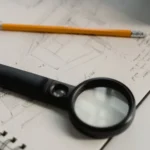Understanding US Patent Costs: What’s the Price of Protection?
- Updated on: Jan 11, 2025
- Read 13 minutes
- Published on Jan 11, 2025
Obtaining a patent in the United States involves several costs that inventors and businesses need to consider. These costs can vary depending on the complexity of the invention, the type of patent being sought, and the services required from patent attorneys or agents. The major categories of US patent costs include filing fees, attorney fees, maintenance fees, and foreign filing fees.
Filing fees: Filing a patent application with the United States Patent and Trademark Office (USPTO) requires payment of filing fees. These fees cover the initial processing of the application and vary depending on the type of patent and the size of the entity filing the application.
Attorney fees: Many inventors choose to hire a patent attorney or agent to assist them with the patent application process. Attorney fees can vary greatly depending on the complexity of the invention and the experience and reputation of the attorney.
Maintenance fees: Once a patent is granted, the patent holder is required to pay maintenance fees to keep the patent in force. These fees are typically due at regular intervals throughout the life of the patent.
Foreign filing fees: If an inventor wishes to obtain patent protection in countries outside of the United States, additional fees will be incurred for filing and prosecuting patent applications in each foreign country.
It is important for inventors and businesses to carefully consider these costs and budget accordingly when pursuing patent protection in the United States.
Why are US patent costs important?
US patent costs play a crucial role in the protection and commercialization of intellectual property. Obtaining a patent provides inventors with exclusive rights to their inventions, allowing them to prevent others from making, using, or selling their patented technology. However, the process of obtaining a patent can be complex and costly. Understanding the costs associated with patent applications, maintenance fees, and legal fees is essential for inventors and businesses to make informed decisions about pursuing patent protection. Additionally, knowledge of patent costs is crucial for budgeting and financial planning, as patent expenses can significantly impact the bottom line. By understanding US patent costs, inventors and businesses can better assess the potential return on investment and determine the feasibility of pursuing patent protection for their innovative ideas and technologies. It is important to note that patent costs can vary depending on factors such as the type of patent, the complexity of the invention, the number of claims, and the jurisdiction in which the patent is filed. Therefore, it is advisable to consult with a patent attorney or professional to obtain accurate and up-to-date information regarding US patent costs.
Factors that influence US patent costs
There are several factors that can influence the costs associated with obtaining a US patent.
Type of patent: The type of patent being applied for can have a significant impact on the overall cost. Utility patents, which protect new and useful processes, machines, or compositions of matter, tend to be more expensive than design patents, which protect the ornamental design of a functional item.
Complexity of the invention: The complexity of the invention being patented can also affect the cost. Inventions that are more complex or require extensive research and development may require more time and resources, resulting in higher costs.
Patent application process: The process of filing a patent application can be time-consuming and requires careful attention to detail. Hiring a patent attorney or agent to assist with the application process can add to the overall cost.
Patent office fees: The US Patent and Trademark Office charges various fees for filing, examination, and maintenance of a patent. These fees can vary depending on the type of patent and the size of the entity applying.
Patent prosecution: The process of prosecuting a patent application, including responding to office actions and potentially going through appeals or reexaminations, can add additional costs. It is important to budget for these potential expenses when considering the overall cost of obtaining a US patent.
Geographic coverage: If an inventor wishes to obtain patent protection in multiple countries, the costs can increase significantly. Each country has its own patent office fees and requirements, which can add to the overall cost.
Legal fees: Hiring a patent attorney or agent to assist with the patent application and prosecution process can result in legal fees. These fees can vary depending on the complexity of the invention and the experience of the attorney or agent. It is important to factor in these fees when budgeting for the cost of obtaining a US patent.
Types of US Patent Costs
Filing fees
Filing a patent application with the United States Patent and Trademark Office (USPTO) incurs various costs, including filing fees. These fees are required to be paid at different stages of the patent application process. The amount of the filing fees depends on the type of patent being filed, such as utility, design, or plant patents. The USPTO provides a fee schedule that outlines the specific fees for each type of patent application.
In addition to the basic filing fee, there may be additional fees for certain actions or requests during the application process. For example, filing a request for an extension of time to file a response to an office action may incur an additional fee. It is important for applicants to carefully review the fee schedule and understand the potential costs associated with their patent application.
It is worth noting that the filing fees are non-refundable, regardless of the outcome of the patent application. Therefore, it is essential for applicants to thoroughly prepare their patent application and ensure it meets all the requirements before filing to avoid unnecessary costs.
Attorney fees
When it comes to filing a patent, hiring an attorney is highly recommended. Attorney fees can vary depending on the complexity of the invention and the services provided. Typically, attorneys charge an hourly rate for their services, ranging from $250 to $500 per hour. However, some attorneys may offer a flat fee for certain services, such as drafting and filing the patent application. It’s important to discuss the fees and payment structure with the attorney before engaging their services.
In addition to the attorney fees, there may be additional costs associated with the patent process. These costs can include filing fees, search fees, examination fees, and maintenance fees. It’s important to budget for these costs when considering the overall price of obtaining a patent.
Overall, the cost of hiring an attorney and obtaining a patent can vary widely depending on the complexity of the invention and the services required. It’s important to carefully consider the potential benefits and costs before proceeding with the patent process.
Maintenance fees
Maintenance fees are an essential aspect of the US patent system. Patent owners are required to pay these fees to keep their patents in force and prevent them from expiring. The United States Patent and Trademark Office (USPTO) imposes maintenance fees at various stages throughout the life of a patent. The fees increase over time, with higher amounts due at later stages.
The purpose of maintenance fees is to ensure that patent owners actively maintain and utilize their patents. By imposing these fees, the USPTO aims to prevent patent owners from holding onto patents without using them, which can hinder innovation and economic growth.
The amount of maintenance fees varies depending on the type of patent. For utility patents, the fees are due at three different intervals: 3.5 years, 7.5 years, and 11.5 years after the patent grant date. The fees for design patents are due at 3.5 years and 7.5 years after the grant date. The USPTO provides a fee schedule that specifies the exact amounts for each stage.
It is important for patent owners to stay aware of the maintenance fee deadlines and make timely payments. Failure to pay the fees within the specified timeframes can result in the expiration of the patent. However, the USPTO does provide a grace period during which the fees can still be paid with an additional surcharge.
In conclusion, maintenance fees are an integral part of the US patent system, ensuring that patent owners actively maintain and utilize their patents. By imposing these fees, the USPTO encourages innovation and prevents the hoarding of patents without use. Patent owners should be aware of the fee deadlines and make timely payments to avoid the expiration of their patents.
Calculating US Patent Costs
Understanding the different cost components
When it comes to understanding US patent costs, it’s important to break down the different components that contribute to the overall price of protection. Filing fees are one of the primary costs associated with obtaining a patent. These fees vary depending on the type of patent being filed and can range from a few hundred dollars to several thousand dollars. Another significant cost component is attorney fees. Hiring a patent attorney is crucial for navigating the complex patent application process, but their services can come at a substantial cost. Additionally, maintenance fees must be paid to keep a patent in force. These fees are typically due at regular intervals throughout the life of the patent and can add up over time. Other miscellaneous costs may include search fees, examination fees, and translation fees if the patent application requires additional services. By understanding these different cost components, inventors and businesses can better plan and budget for the price of protecting their intellectual property.
Estimating the total cost
When it comes to filing a patent in the United States, it is important to understand the various costs involved. Estimating the total cost of obtaining a patent can be complex, as it depends on several factors such as the type of patent, the complexity of the invention, and the services required. However, there are some common expenses that applicants should consider.
One of the primary costs is the filing fee, which is required to submit a patent application to the United States Patent and Trademark Office (USPTO). The filing fee varies depending on the type of patent being filed, with different rates for utility, design, and plant patents.
In addition to the filing fee, applicants may also incur attorney fees. Hiring a patent attorney or agent is highly recommended, as they can provide valuable guidance throughout the patent process. Attorney fees can vary depending on the complexity of the invention and the level of expertise required.
Another cost to consider is the patent search fee. Before filing a patent application, it is important to conduct a thorough search to ensure that the invention is novel and non-obvious. The USPTO offers a search service, and the fee for this service depends on the type of search requested.
Other costs that may arise include office action responses, which are fees incurred when responding to objections or rejections from the USPTO, and maintenance fees, which are required to keep the patent in force after it is granted.
Overall, estimating the total cost of obtaining a patent in the United States can be challenging. It is important for applicants to carefully consider all potential expenses and budget accordingly. Seeking professional advice from a patent attorney or agent can greatly assist in understanding and managing these costs.
Budgeting for US patent costs
When it comes to budgeting for US patent costs, it is important to consider several factors. Filing fees are one of the main expenses associated with obtaining a patent. These fees vary depending on the type of patent being filed and the size of the entity filing the application. For example, the filing fees for a small entity are generally lower than those for a large entity. In addition to filing fees, there are also prosecution costs, which include expenses related to responding to office actions and conducting interviews with patent examiners. Maintenance fees are another important consideration, as they are required to keep a patent in force after it has been granted. These fees are typically due at regular intervals throughout the life of the patent. Other costs to consider include attorney fees, search fees, and translation fees if the patent application needs to be translated into multiple languages. It is essential to carefully budget for these costs to ensure that the patent process is financially manageable.
Importance of considering US patent costs
When it comes to protecting intellectual property, obtaining a patent is crucial. However, it is important to consider the costs associated with obtaining and maintaining a US patent. Understanding US patent costs can help inventors and businesses make informed decisions about whether to pursue patent protection.
Several factors contribute to the overall cost of obtaining a US patent. First, there are the filing fees, which can vary depending on the type of patent being sought. For example, the filing fee for a utility patent is currently $280, while the fee for a design patent is $180. Additionally, there are fees for conducting a patent search and examination, as well as fees for responding to office actions.
In addition to the initial filing fees, there are also ongoing maintenance fees that must be paid to keep a US patent in force. These fees are due at regular intervals throughout the life of the patent and can add up over time. It is important to factor in these maintenance fees when considering the overall cost of obtaining and maintaining a patent.
Considering US patent costs is not only important for budgeting purposes but also for assessing the potential return on investment. Obtaining a patent can provide valuable protection for an invention, but it is essential to weigh the costs against the potential benefits. By understanding the costs involved, inventors and businesses can make informed decisions about whether to pursue patent protection and how to allocate their resources effectively.
Strategies for managing patent costs
Managing patent costs is crucial for businesses of all sizes. Here are some strategies that can help businesses minimize their expenses while still protecting their intellectual property:
Conduct a thorough prior art search: Before filing a patent application, it is important to conduct a comprehensive search to identify any existing patents or prior art that may impact the patentability of the invention. This can help avoid unnecessary costs associated with filing a patent for an invention that may already be patented.
Focus on the core claims: When drafting a patent application, it is important to focus on the core claims that provide the most value to the business. By narrowing down the scope of the claims, businesses can reduce the complexity and cost of the application.
Consider international patent protection strategically: Obtaining patent protection in multiple countries can significantly increase costs. Businesses should carefully evaluate the markets where their invention is likely to have the most value and prioritize patent protection in those countries.
Regularly review and manage patent portfolios: It is important to regularly review and manage patent portfolios to identify any patents that are no longer valuable or relevant to the business. By pruning the portfolio, businesses can reduce maintenance costs and focus resources on patents that provide the most value.
Collaborate with patent attorneys and experts: Working with experienced patent attorneys and experts can help businesses navigate the complex patent process and identify cost-saving strategies. These professionals can provide valuable guidance on patentability, infringement risks, and cost-effective filing strategies.
By implementing these strategies, businesses can effectively manage their patent costs while still ensuring strong protection for their intellectual property.
Impact of patent costs on innovation
The cost of obtaining and maintaining a patent can have a significant impact on innovation. Patent costs refer to the expenses incurred in the process of filing, prosecuting, and maintaining a patent. These costs can include attorney fees, filing fees, examination fees, and maintenance fees. The high cost of obtaining a patent can be a barrier to entry for small businesses and individual inventors, limiting their ability to protect their inventions and commercialize their ideas. This can discourage innovation, as inventors may be hesitant to invest in the patent process due to the financial burden. Additionally, the ongoing maintenance fees required to keep a patent in force can be a financial strain for inventors and businesses, especially if they have a large portfolio of patents. As a result, the cost of patents can create a competitive advantage for larger companies with more resources, as they are better able to afford the expenses associated with patent protection. This can lead to a concentration of innovation in larger corporations, while smaller players are left at a disadvantage. To promote innovation and ensure a level playing field, it is important to consider ways to reduce the costs of obtaining and maintaining patents, particularly for small businesses and individual inventors.










No comment yet, add your voice below!